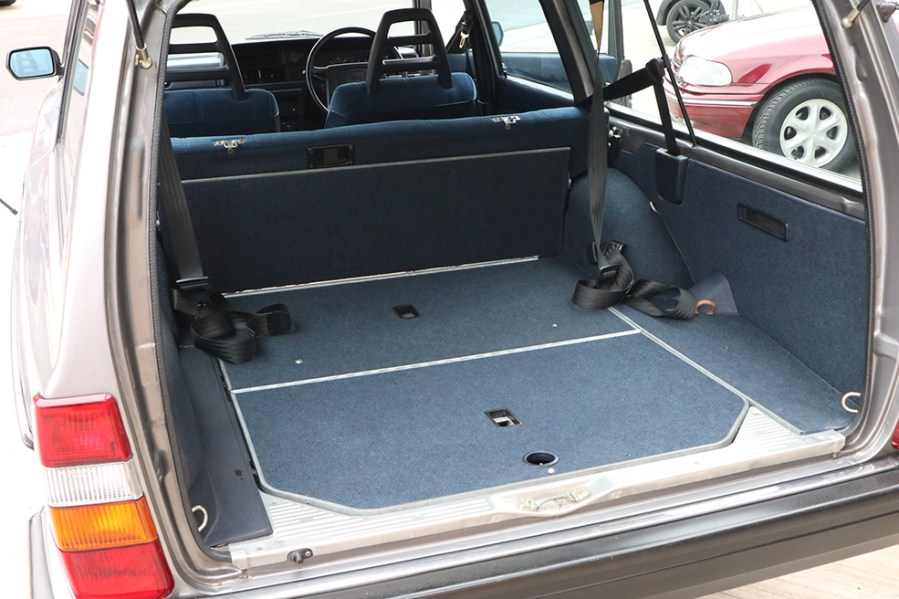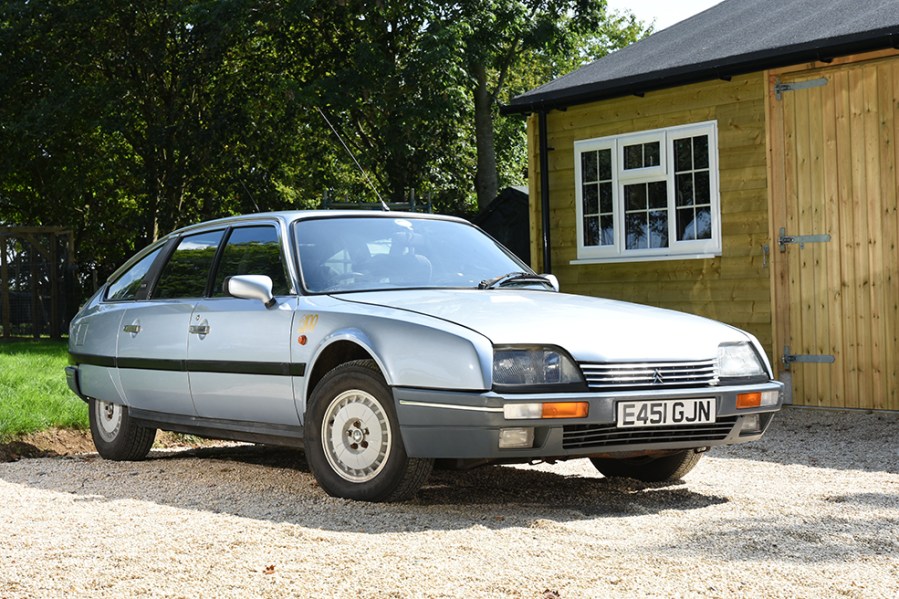We rewind to 1974 to look back at the cars that turn 50 years old in 2024, including a supercar icon and class-defining hatchback
Citroën CX (1974-1991)
Replacing the groundbreaking Citroën DS was a challenge for Citroën, but the French company lent heavily on its reputation for quirkiness when it came up with its 1974 successor. Renowned designer Robet Opron styled it with aerodynamics firmly in mind to create a car with a remarkable 0.36 drag coefficient – indeed, the name CX referred to the French for aerodynamic drag. Beyond its ability to cut through the air efficiently though, the CX was a striking car to behold with its tapered window line, cowled rear wheels and concave tailgate glass. Much like the DS had looked futuristic in 1955, the CX too looked like it came from space.
The interior was a similar blend of futuristic and wild, with a single-spoke wheel granting a view of rotating drum dials and rocker-switch indicators, complimented by a sideways stereo, mounted next to the handbrake. So typically Citroën, each element of the CX appears strange at first, but in use, the ability to reach all major controls with both hands still on the wheel is surprisingly intuitive. The floaty hydropneumatic self-levelling suspension system remained, now sporting speed-sensitive self-centering power steering. The near flawless ride quality of the CX rivalled that of Rolls-Royce and Mercedes, making it the perfect TV camera car to capture events such as the Grand National, while the transverse engine layout maximized interior space. Combined, both elements made it the perfect dignitary transport – President Chirac kept his official CX years after production ended.
The wacky styling, difficult maintenance and unconventional suspension meant the CX never challenged BMW, but a 17-year life and 1.17 million sales are extremely impressive for such a left-field executive car. Today, CX ownership can still grant you a DS-like experience for a fraction of the cost, with decent examples available from around £7000, but be prepared for challenging maintenance and/or pricey specialist bills that come with such a radical classic.

Lamborghini Countach (1974-1990)
The stunning Miura cemented Lamborghini’s status as a Ferrari rival, but like the DS, replacing such a car was never going to be easy. Ferruccio Lamborghini decided the new car should be focused on high performance and aerodynamics, prioritising both over a more comfortable grand tourer like the firm’s first car, the 350GT. The mid-engine layout largely pioneered by the Miura was retained for its balance, but a lot of attention was paid to the front-end design to prevent high-speed instability. The name ‘Countach’ was derived from Piedmontese (a language native to northern Italy) and its exclamation of astonishment – essentially Italian for “blimey!”
The Countach concept was revealed to strong acclaim at the 1971 Geneva Auto Show as the LP500 – ‘LP’ being the acronym of the Italian for longitudinal rear (engine), and 500 indicating the 5-litre V12 engine. Its striking wedge shape, low nose and remarkable width looked like no car before it, with no body trims or even bumpers to interrupt the sharp lines penned by Marcello Gandini of the Bertone design studio.
Even as a concept the Countach was scarcely believable, so imagine the response in 1974 when the near two-metre wide, scissor-doored creation made it to production, initially as the LP400. The impractically low ride height, width and almost total lack of visibility made it clear that the new Lamborghini put looking good ahead of looking where you were going.

The interior was similarly form over function, with the gorgeous Italian leather and host of airplane-esque gauges presenting well, but clothed in a cramped, awkwardly shaped cabin that required taller drivers to slouch to avoid headbutting the roof. Still, the heavy gearchange and feeble air conditioning mattered not, as the howling V12 engine and epic styling gave the Countach more theatre than any car before, and possibly since.
The car evolved through LP400, LP400 S, LP500 S, LP 500 Quattrovalvole and 25th Anniversary Edition guises before the Countach was superseded by the Diablo in 1990. Yes, it was flawed, but few 1970s and 1980s schoolboys didn’t have a Countach poster on their wall. Such an iconic status makes today’s typical £800,000 entry price unsurprising.
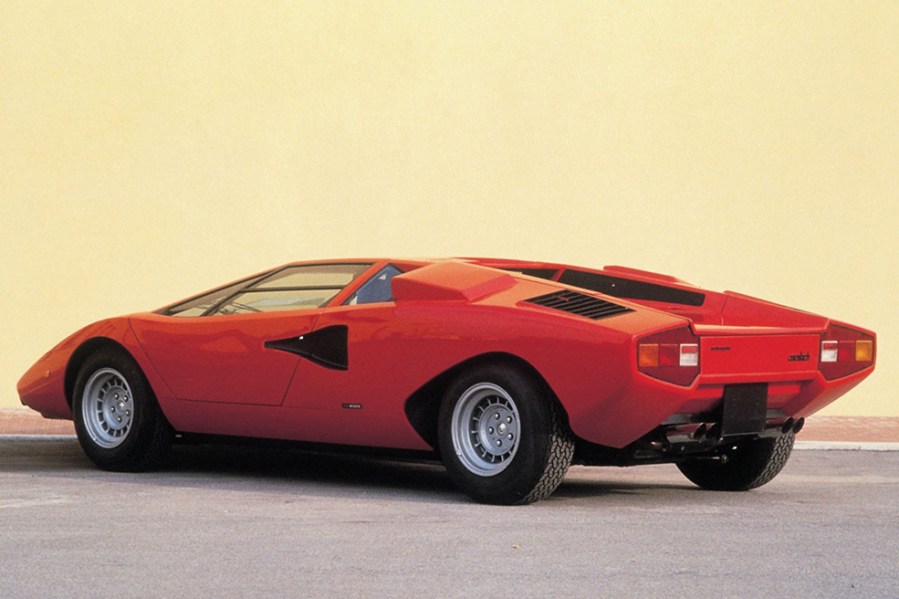
Volkswagen Golf Mk1 (1974-1987)
Volkswagen had been trying to replace the ubiquitous Beetle since the early 1950s, but it would be the acquisition of NSU in 1969 that would finally lay solid foundations to do so. NSU’s front-wheel drive mid-size hatchback project was further developed by Volkswagen, who employed Giugiaro to repackage the engineering into a three- and five-door family car. The Italian’s preference for straight lines and sharp edges created a neat, smart final product, modern enough to stand out but not radical enough to be off-putting to conservative buyers. Assigned the simple, effective name of ‘Golf’ – said to either derive from the sport, the Gulf Stream or name of a horse – the culmination of Project EA337 would be released in March 1974.
Launched shortly after the Scirocco, another Giugiaro design with Golf mechanicals in a coupe body, the Golf Mk1 reversed the Beetle’s layout to feature a modern water-cooled engine mounted transversely at the front, maximising interior space. Praised for its packaging, refinement, modern interior and its combination of an excellent ride, the Golf instantly made existing family cars like the Ford Escort and Hillman Avenger look rather old-fashioned. Within a year, the Golf was Britain’s 14th best-selling car and would narrowly miss out on the 1975 European Car of The Year to another of our anniversary celebrators, the Citroën CX.
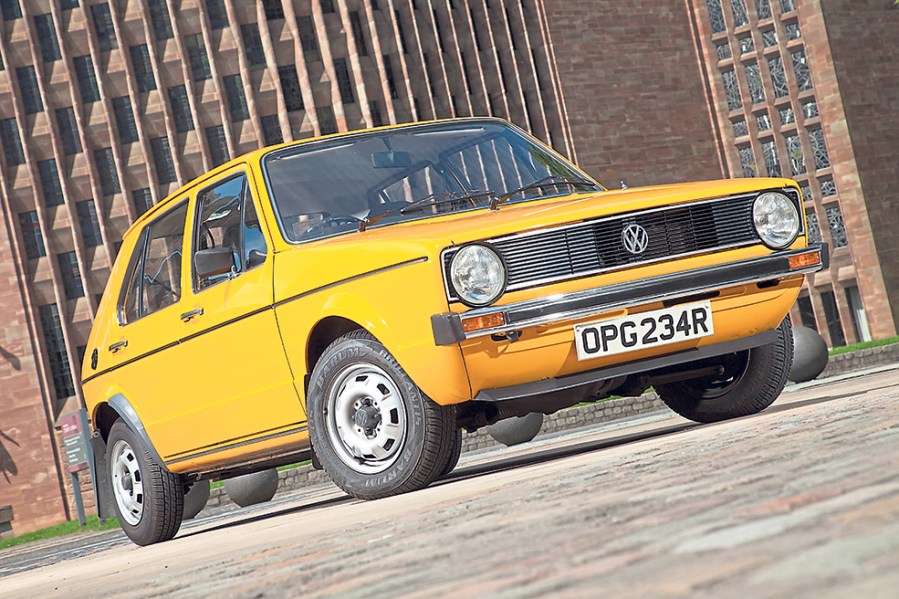
Before the Golf, the family car class had been complacent, gently evolving to improve performance and refinement, but Volkswagen set new standards for the genre and its little wonder six million Mk1 Golfs were sold. From humble 1.1 to the sporty GTI that kick-started a hot hatchback revolution in the 1980s, the Volkswagen Golf was all things to all people and today, is credited as one of the firm’s high points.
Even in its final sales year of 1983 it sold more than 25,000 units and was Britain’s 14th best-selling car, despite being almost 10 years old. Remarkably, the Cabriolet version would continue until 1993, and the Mk1-based CitiGolf was being produced in South Africa until as late as 2009.
These days, a humble Mk1 Golf in five-door guise can be yours from £3000. However, tidy GTIs are highly-prized these days, rarely changing hands for anything below £13,000.
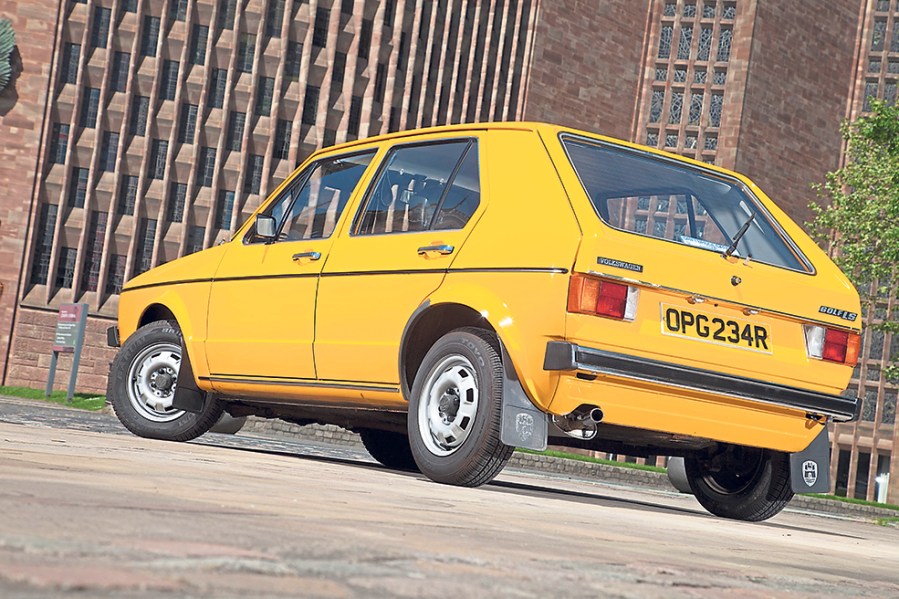
Volvo 200-Series (1974-1993)
An executive-class model that remains in production for almost two decades is something of a rarity, but the Volvo 200-series managed such a feat. It made its debut as the 244 saloon in 1974, with the 245 estate following in 1975, and didn’t go off sale until 1993.
It won’t come as a surprise to learn that despite looking similar to its 140-Series predecessor, the main improvements of the Volvo 200 concerned safety. Following extensive safety research in the VESC development vehicle, the new Volvo featured large front and rear crumple zones that would absorb impact energy to protect occupants. It also borrowed the VESC concept’s ‘shovel-nose’ front end, which helped to modernise the look. Meanwhile, MacPherson strut front suspension increased space in the engine bay to allow for further crumple zones and the fitment of new overhead-cam engines in place of the old pushrod units, and the new cars also trumped the 140 in boasting rack-and-pinion steering.

Unsurprisingly, the now-ubiquitous estate model was a mainstay of the range. A dual rear jump-seat was available, giving this family estate carrying capacity to rival a small minibus, while protecting those occupants with three-point seatbelts and a further-reinforced floor structure. Safety features were in abundance, with a soft crash pad on the steering wheel complimented by a flashing warning light if you sat in the seat but didn’t belt-up. Volvos were already deemed safe, but the 200 took that to another level, while a comfortable ride, an upmarket cabin in higher trim levels and a vast 1160 litres of boot space in estate guise made it the perfect family car.
Also made available were the 264 and 265 models, sharing essentially the same styling but with 2664cc V6 power rather than four-cylinder engines. These V6 models would be phased out by 1985, having been displaced by the arrival of Volvo’s new 760 flagship, while the 262C, a two-door coupe version of the six-cylinder saloon complete with lowered roofline for a more American look, lasted from 1977-1981. Later, the cars would simply be known as 240 and 260s, with saloon production ending in 1991 and the estate surviving for two more years, when the run-out Torslanda became available.
The Turbo variant of 1980 gave Volvo’s mobile safety-cell performance to rival BMW’s offerings, and famously unburstable durability has led to 240s being nicknamed the ‘cockroach of cars’. Unpleasant names aside, it’s very hard not to love a Volvo 200 – it could be the perfect year-round classic and with prices starting around £3500, there’s plenty of incentive to own one.
